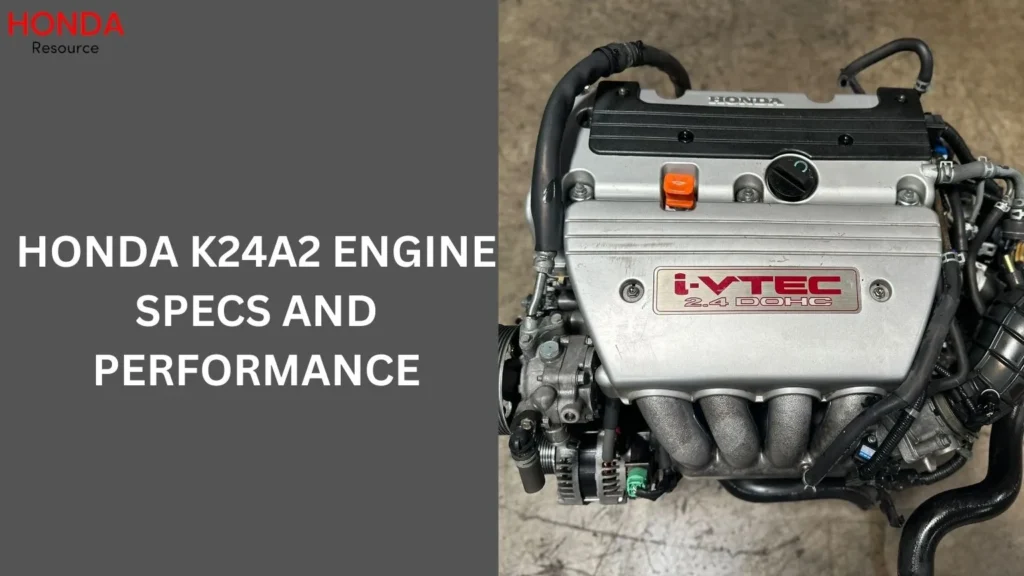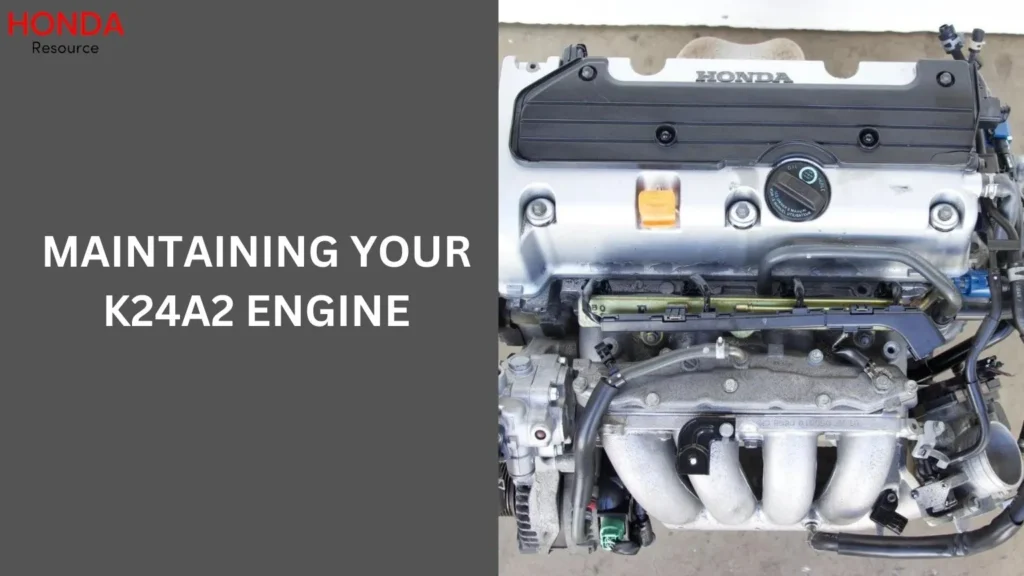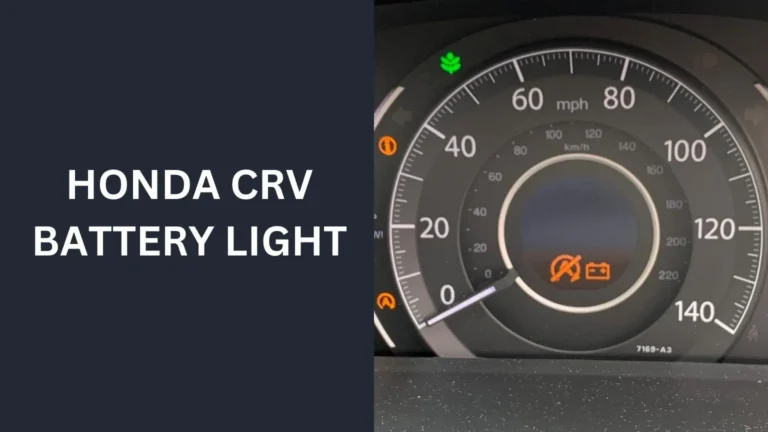Honda K24A2 Engine Specs and Performance
The K24A2 engine, a standout in the Honda lineup, offers impressive performance and reliability. In this article, we’ll dive into the specifics of the K24A2 engine, exploring its features, advantages, and common issues.
Whether you’re a car enthusiast or just curious about this powerful engine, we’ve got you covered.

What is the K24A2 Engine?
The K24A2 engine is part of Honda’s K-series, known for its robust performance and reliability. This 2.4-liter, inline-4 engine was primarily used in the 2004-2008 Honda TSX and the 2006-2008 Honda Accord.
It’s celebrated for its high-revving nature and strong torque output, making it a favorite among car enthusiasts.
Key Features of the K24A2
- Displacement: 2.4 liters
- Configuration: Inline-4
- Power Output: Approximately 200 horsepower
- Torque: Around 170 lb-ft
- VTEC: Yes, Variable Valve Timing and Lift Electronic Control
The K24A2 engine is known for its VTEC system, which enhances performance by adjusting valve timing. This system provides better fuel efficiency at lower RPMs and increased power at higher RPMs.
Advantages of the K24A2 Engine
The K24A2 engine, a popular choice among Honda enthusiasts, offers a range of benefits that make it stand out in the automotive world. Here’s a closer look at the key advantages of the K24A2 engine:
1. High Performance and Power
One of the most significant advantages of the K24A2 engine is its impressive performance. With a power output of around 200 horsepower and 170 lb-ft of torque, this engine delivers strong acceleration and a thrilling driving experience.
The high-revving nature of the K24A2, thanks to Honda’s Variable Valve Timing and Lift Electronic Control (VTEC) system, allows it to generate substantial power at higher RPMs, making it a favorite among performance enthusiasts.
2. Reliability and Durability
Honda is known for building reliable engines, and the K24A2 is no exception. This engine is designed to withstand the rigors of daily driving while offering long-term durability.
Many owners have reported that their K24A2 engines have run smoothly for over 200,000 miles with proper maintenance.
The robust construction and engineering excellence behind the K24A2 contribute to its reputation for reliability.
3. Excellent Fuel Efficiency
Despite being a performance-oriented engine, the K24A2 offers commendable fuel efficiency. This balance between power and economy is a testament to Honda’s engineering prowess.
The VTEC system plays a significant role in optimizing fuel consumption by adjusting valve timing based on engine speed and load. This means you can enjoy spirited driving without sacrificing too much at the gas pump.
4. Strong Aftermarket Support
The K24A2 engine has a large and active aftermarket community. Whether you’re looking to enhance the engine’s performance or customize your vehicle, there’s no shortage of aftermarket parts and tuning options available.
From performance intakes and exhaust systems to turbo kits and engine management solutions, the K24A2 engine can be easily modified to meet your specific needs.
5. Versatility in Applications
The K24A2 engine’s versatility is another significant advantage. It has been successfully swapped into a variety of Honda and Acura models, as well as other vehicles, thanks to its compact size and strong performance characteristics.
This makes it a popular choice for engine swaps and performance builds, offering a cost-effective way to upgrade the powertrain of various vehicles.
6. Smooth and Responsive Driving Experience
The K24A2 engine provides a smooth and responsive driving experience, with a linear power delivery that makes it enjoyable to drive in various conditions.
The combination of strong mid-range torque and high-end power ensures that the engine performs well whether you’re cruising on the highway or pushing it on a track.
7. Longevity with Proper Maintenance
When maintained correctly, the K24A2 engine has a reputation for longevity. Regular oil changes, timely replacement of the timing chain tensioner, and monitoring of the VTEC system are crucial to keeping this engine running for many years.
The durability of the K24A2 makes it a reliable choice for daily drivers and long-term ownership.
8. Emissions Compliance
Despite its performance capabilities, the K24A2 engine is designed to meet stringent emissions standards.
Honda’s engineering ensures that the engine remains efficient and environmentally friendly, making it a responsible choice for performance enthusiasts who are also conscious of their carbon footprint.
Common Issues with the K24A2 Engine
While the K24A2 engine is known for its performance and reliability, like any mechanical component, it’s not without its issues.
Understanding these common problems can help owners take proactive measures to maintain their engine’s health. Here are some of the most frequently reported issues with the K24A2 engine:
1. Excessive Oil Consumption
One of the more common issues reported by K24A2 engine owners is excessive oil consumption.
Over time, some drivers notice that their engine consumes more oil than expected, requiring frequent top-offs between oil changes.
This can be caused by several factors, including worn piston rings, valve seals, or even the design of the engine itself.
To mitigate this, it’s crucial to monitor oil levels regularly and use high-quality engine oil. If the issue persists, it might be necessary to inspect and replace worn components.
2. Timing Chain Tensioner Problems
The timing chain tensioner is another component that can cause problems in the K24A2 engine. Over time, the tensioner can wear out or lose its ability to maintain proper tension on the timing chain, leading to a rattling noise, especially during startup.
If left unaddressed, a faulty tensioner can lead to more severe issues, such as timing chain failure, which can cause significant engine damage.
Regular inspections and timely replacement of the timing chain tensioner are essential to prevent this problem.
3. VTEC Solenoid Failure
The K24A2 engine’s VTEC (Variable Valve Timing and Lift Electronic Control) system is a key feature that enhances performance, but it can also be a source of trouble.
The VTEC solenoid, responsible for activating the VTEC system, may fail over time, leading to reduced engine performance, poor fuel economy, and even triggering a check engine light.
Symptoms of a failing VTEC solenoid include sluggish acceleration and an overall lack of power. Replacing the solenoid usually resolves the issue, restoring the engine’s performance.
4. Head Gasket Issues
Though not as common, some K24A2 engines have experienced head gasket failures. A blown head gasket can lead to a variety of problems, including coolant leaks, overheating, and loss of compression.
Symptoms of a blown head gasket include white smoke from the exhaust, coolant in the oil (resulting in a milky appearance), and unexplained coolant loss.
Addressing a blown head gasket promptly is critical to prevent further engine damage, such as warped cylinder heads or engine block damage.
5. Knock Sensor Malfunction
The knock sensor in the K24A2 engine is designed to detect engine knocking or pinging, which can cause damage if left unchecked.
However, this sensor can sometimes fail or become overly sensitive, leading to a check engine light and a possible reduction in engine performance.
If the knock sensor is malfunctioning, it may trigger the engine to run in a “safe mode,” limiting power to prevent damage. Replacing the knock sensor can resolve this issue and restore normal engine operation.
Maintaining Your K24A2 Engine

Proper maintenance is essential for keeping the K24A2 engine running smoothly and ensuring its longevity. By following a consistent maintenance routine, you can avoid common issues and enjoy the full performance potential of your engine.
Here’s a guide to maintaining your K24A2 engine:
1. Regular Oil Changes
One of the most crucial aspects of maintaining the K24A2 engine is regular oil changes. Using high-quality engine oil and changing it at the recommended intervals is vital to keeping the engine’s internal components well-lubricated and free from harmful deposits.
Honda typically recommends oil changes every 5,000 to 7,500 miles, but this can vary based on driving conditions and oil type. Always check your oil level between changes to ensure it’s within the optimal range.
2. Use OEM or High-Quality Parts
When replacing parts on your K24A2 engine, it’s essential to use either Original Equipment Manufacturer (OEM) parts or high-quality aftermarket components.
This ensures compatibility and reliability, helping to maintain the engine’s performance and longevity.
Cheap, low-quality parts can lead to premature wear or even damage, so it’s worth investing in quality components.
3. Timing Chain and Tensioner Maintenance
The timing chain and tensioner are critical components that require attention, especially as the engine accumulates miles.
Unlike timing belts, chains are generally more durable, but the tensioner can wear out and may need replacement to prevent slack in the chain.
Listen for any unusual noises, like rattling during startup, which could indicate a tensioner issue. Honda recommends inspecting the timing chain and tensioner around 100,000 miles and replacing them if necessary.
4. Monitor the VTEC System
The K24A2’s VTEC system is a key feature that enhances performance by adjusting valve timing. Regularly checking the VTEC solenoid and related components can help ensure the system functions properly.
If you notice any performance issues, such as a drop in power or poor fuel economy, have the VTEC system inspected. Cleaning or replacing the solenoid may be necessary to maintain optimal engine performance.
5. Coolant System Maintenance
Proper cooling is essential for preventing overheating and ensuring the engine operates within the ideal temperature range.
Regularly check the coolant level and top it off if necessary. It’s also important to replace the coolant as per Honda’s recommended intervals, usually every 30,000 to 60,000 miles, depending on the coolant type.
Inspect the radiator, hoses, and water pump for any signs of leaks or wear, and replace components as needed.
6. Spark Plug and Ignition System Care
The K24A2 engine relies on a healthy ignition system to perform at its best. Replace the spark plugs at the recommended intervals (typically every 30,000 to 60,000 miles, depending on the plug type) to ensure efficient combustion.
Using the correct spark plugs for your engine is crucial for maintaining performance and fuel efficiency. Additionally, inspect the ignition coils and wires for wear or damage, and replace them if necessary.
People also ask
What cars did the K24A2 come in?
The K24A2 engine was primarily featured in the following vehicles:
2004-2008 Acura TSX: The K24A2 was the standard engine for this model, offering a blend of performance and efficiency.
2003-2007 Honda Accord (Euro-R): In some markets, particularly in Europe and Japan, the Honda Accord Euro-R came equipped with the K24A2 engine.
2007-2008 Honda CR-V: Though not as common, certain models of the Honda CR-V in specific regions were also fitted with the K24A2 engine.
How much HP can a K24A2 handle?
A stock K24A2 engine can typically handle around 300 to 350 horsepower reliably with proper tuning and bolt-on modifications.
With reinforced internals and additional upgrades like a turbocharger, the engine can handle upwards of 500 to 600 horsepower,
though this requires significant modifications and expert tuning to maintain reliability.
Does K24A2 have VTEC?
Yes, the K24A2 engine does have VTEC. It features Honda’s i-VTEC system, which adjusts valve timing and lift to optimize both performance and fuel efficiency across different RPM ranges.
This system is a key factor in the engine’s strong power delivery and efficiency.
Is a K24A2 worth building?
Yes, the K24A2 is worth building. It’s a popular choice among enthusiasts due to its strong performance potential, reliability, and extensive aftermarket support.
Whether you’re aiming for a high-powered naturally aspirated setup or a turbocharged build, the K24A2 offers a solid foundation for various performance upgrades.
Conclusion
In Conclusion, The K24A2 engine is a remarkable piece of engineering, known for its performance, reliability, and efficiency.
By understanding its features, advantages, and common issues, you can ensure that your engine remains in top shape for years to come.
Regular maintenance and good driving practices are essential for keeping this engine running smoothly.

I’m Henry Leclerc, a passionate professional car mechanic with a deep love for Honda cars. With years of hands-on experience and extensive knowledge about all Honda car models, I’ve created this website to share my expertise and help fellow Honda enthusiasts keep their vehicles in top-notch condition.






